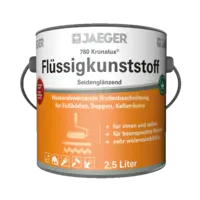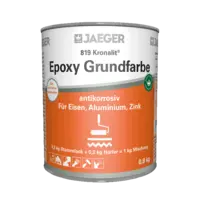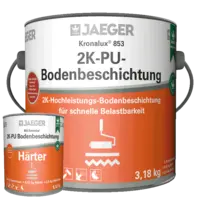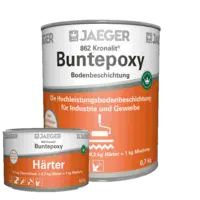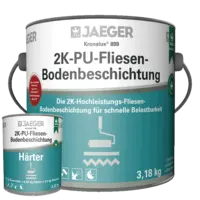Kronisol® Floor Coating 851
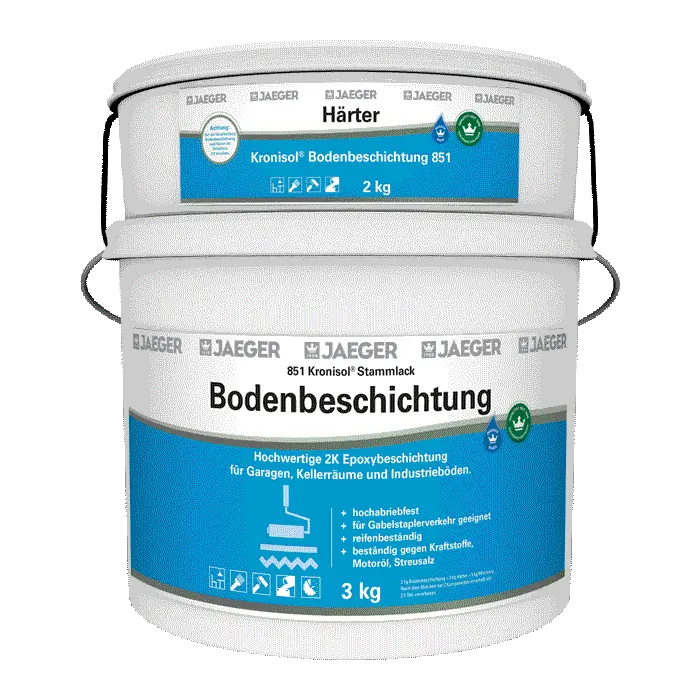
Floor coating for garage floors
- Highly abrasion-resistant
- Largely resistant to water, petrol and diesel fuel, road salt, diluted alkalis, weak acids and household cleaners
- Can be diluted with water
- Tire-resistant – no plasticiser migration after hardening
High-quality garage floor paint for heavily used and stressed floors and wall surfaces made of concrete, cement screed and mastic asphalt (only indoors), fibre cement, garage seal. Only partially suitable for outdoor use, as slight colour changes and chalking effects are possible under the influence of UV and weather.
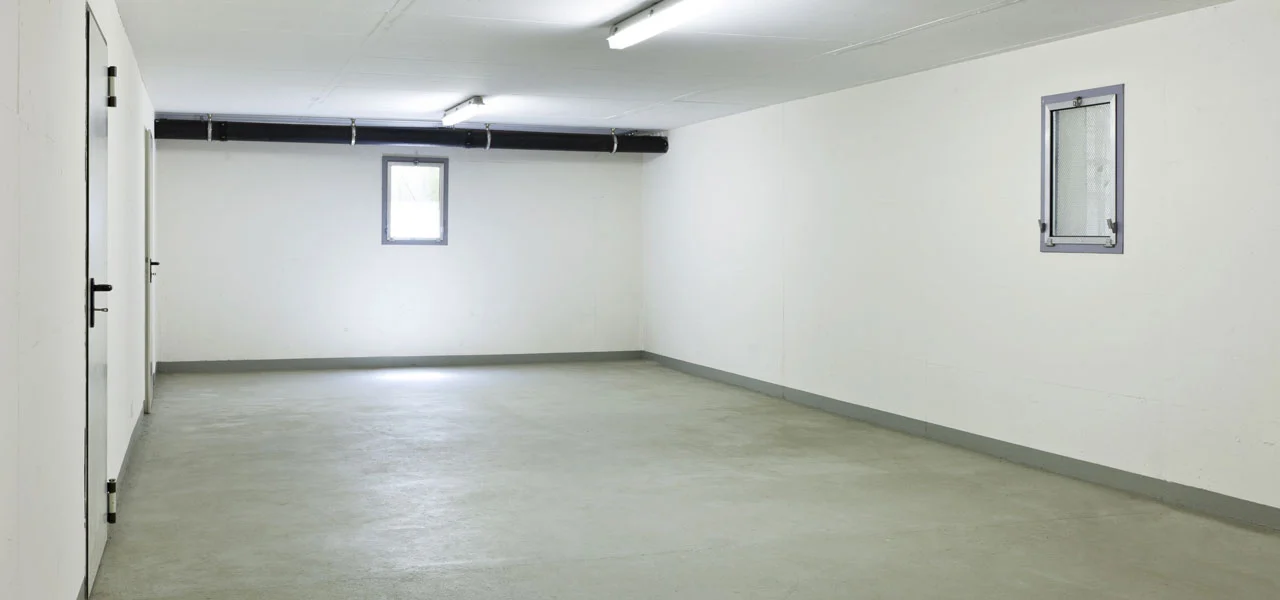
Substrate
Concrete, cement screed, fibre cement, garage seal, plywood. Any coating is only as good as the substrate on which it is applied. Even the best coating cannot permanently fulfil the requirements on a defective substrate.
Substrate preparation
Concrete should be at least 4–6 weeks old before painting begins. The substrate must also be dry, clean, grease-free and load-bearing. Concrete and cement plaster must have sufficient absorbency to ensure adhesion. If in doubt, consult a specialist! To do this, clean and then roughen the substrate (machine sand, sandblast or acidify) before coating to ensure sufficient adhesion and absorbency.
Cleanliness of the substrate
Concrete surfaces that have already been used and are oily or otherwise contaminated must be cleaned using Jaeger Cleaner 080 or other high-quality alkaline cleaning agents, and then washed again with plenty of water or a steam cleaner. Then allow the surfaces to dry thoroughly, sand them and apply the coating. In the case of deep-seated contamination, appropriate remediation measures should be taken (if necessary, remove the contaminated substrate and replace it with a new covering).
Check the load-bearing capacity of the substrate.
Scratch test with a sharp blade (e.g. demolition knife) over a length of at least 30 cm, using normal hand pressure. No noticeable parts should come away, and the scratch depth should not exceed 0.5 mm. Completely remove loose and crumbling layers, as well as sintered layers and cement paste layers, by sandblasting or mechanical roughening. Close cracks in the surface to be coated.
Sintered layer
Accumulation of mineral binders on the surface. Sintered layers are as hard as glass and cannot be loaded. A subsequent coat will flake off together with the sintered layer when subjected to stress. When dry, sinter layers can be recognised by surface gloss and low absorbency. To check, scratch or sand and then moisten with a little water. If the scratch or sanding mark turns dark in colour, there is a sinter layer.
Old coatings
Remove old coatings that are not stable (recognisable by the jagged edge of the paint, check using a scratch test or cross-cut test & adhesive tape test: if a grid with a mesh size of approx. 2 mm cuts in, no paint should come off when an adhesive tape is stuck on and then pulled off). Sand and thoroughly clean old coatings that are capable of holding the paint. In the case of old coatings made of PVC liquid plastic, prime with a suitable adhesion promoter, e.g. Kronen® Isoliergrund 321.
Absorbency of the substrate
When a drop of water is placed on the clean and dust-free surface, the shiny film of water is slowly absorbed on a normally absorbent surface for 15–60 seconds and darkens the surface.
Insufficient absorbency
No penetration into the surface or water beads off. -> Grind the floor until sufficient absorbency is achieved.
If the substrate is very hard and difficult to sand, acidify the floor, e.g. with a citric acid solution, to create the necessary roughness. Then thoroughly rinse with water.
Excessive absorbency
When wetted with water, rapid water absorption and dark colouration (<15 sec., cf. blotting paper effect). -> Strongly or unevenly absorbent substrates should be levelled by priming with Kronisol 851, diluted with 20% water. Alternatively, we recommend using Kronalit® Epoxy Primer 863.
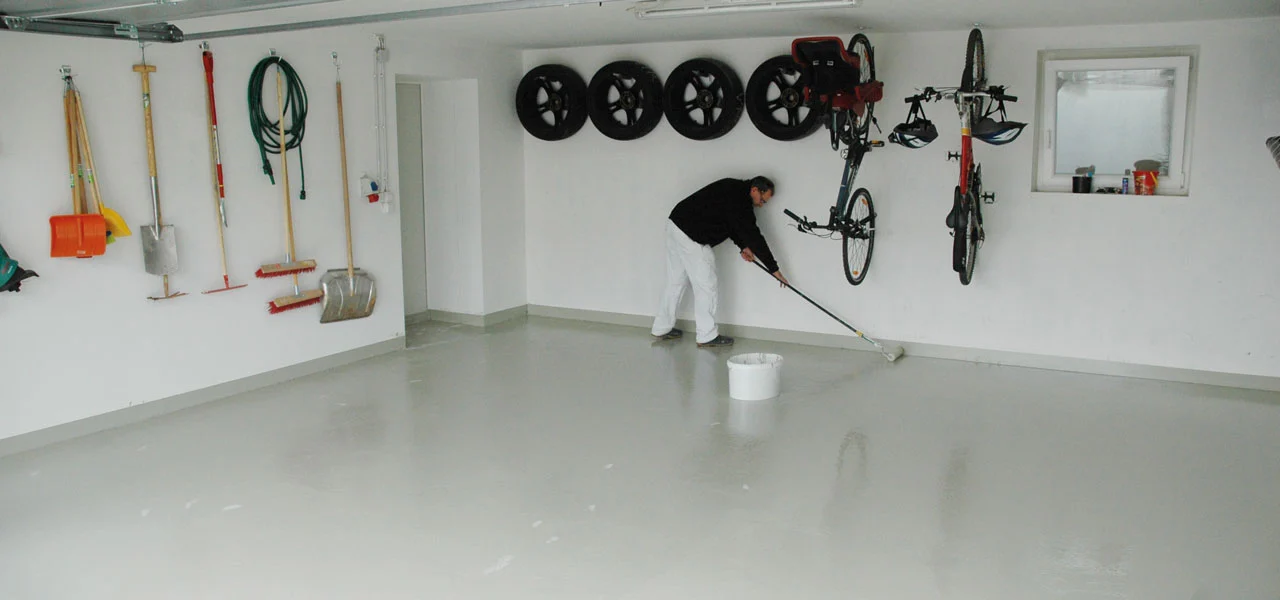
Substrate dryness
The substrate must be dry (if covered with film, no condensation must form). The effect of moisture on the back (ground water) impairs adhesion and can lead to blistering.
Processing
Mix the base and hardener, then dilute if necessary. Only mix the amount that can be processed in the specified pot life. Paint or roll floor coating. Temperature (air, floor) must be at least 12ºC during application and drying. Avoid application temperatures above 30ºC. Only apply in dry conditions; high relative humidity above 65% can lead to delayed drying. Ensure good ventilation to avoid moisture build-up.
Caution: The end of the pot life cannot be determined by sight. Exceeding the pot life will result in changes to the gloss level and colour tone, as well as lower strengths and a loss of adhesion to the substrate.
Technical Details
Pot life: (at 20ºC) 2.5 hours
Thinning/tool cleaning: With water. Clean tools with soapy water immediately after finishing work, if necessary wash again with universal thinner.
Drying: (at 20ºC/55% r.h.) Dust-dry approx. 1 hour, recoatable approx. 24 hours, can be walked on after 7 days, with rubber-tyred vehicles etc. after 10 days.
product data
spreading rate
| paint/roll | spraying |
|---|---|
| 4-6 m²/kg |
item number/shade
| item number | shade |
|---|---|
| 851-0095 | stone grey, ca. RAL 7030 |
| 851-0094 | pebble grey, ca. RAL 7032 |
size of trading unit/box content
| size of trading unit | box content |
|---|---|
| 5 kg | 1 |
